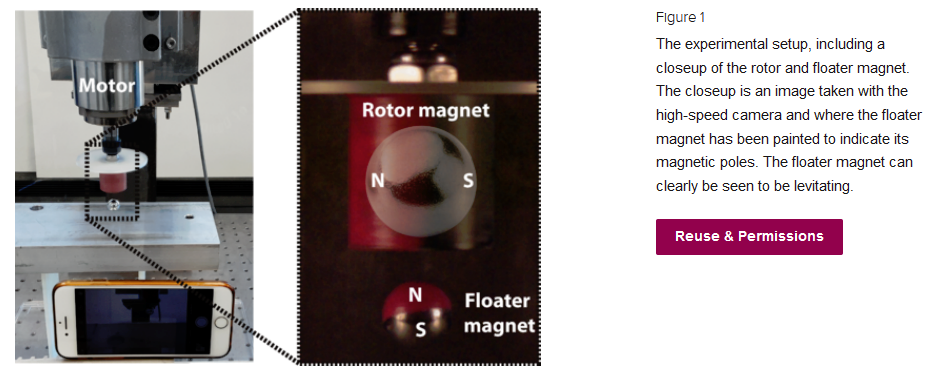When two normal permanent magnets repel, the magnet being suspended flips over.
But with rapid rotation of the magnet doing the suspending, this flip can be avoided and permanent levitation is possible.
https://journals.aps.org/prapplied/abstract/10.1103/PhysRevApplied.20.044036
> A permanent magnet can be levitated simply by placing it in the vicinity of another permanent magnet that rotates in the order of 200 Hz. This surprising effect can be easily reproduced in the laboratory with off-the-shelf components. Here, we have investigated this novel type of magnetic levitation experimentally and clarified the underlying physics. Using a 19-mm-diameter spherical Nd-Fe-B magnet as the rotor magnet, we have captured the detailed motion of levitating spherical Nd-Fe-B magnets, denoted floater magnets, as well as the influence of the rotation speed and magnet size on the levitation.
> this type of magnetic levitation does not rely on gravity as a balancing force to achieve an equilibrium position.
I see it as sort of like a spinning top acts to stop gravity from making it fall over. Like a spinning top, there is no electrical or mechanical feedback mechanism. Or Meissner effect from superconductors. Unlike the spinning top, there is no contact between the spinner and any surface.

The process can even work to keep a normal magnet suspended when the axis of the driving rotor magnet is close to horizontal.


> We have found that as levitation occurs, the floater-magnet frequency locks with the rotor magnet and, noticeably, that the magnetization of the floater is oriented close to the axis of rotation and toward the like pole of the rotor magnet. This is in contrast to what might be expected.
Weird.